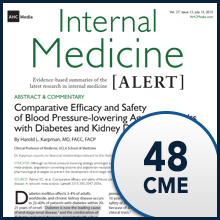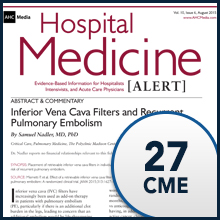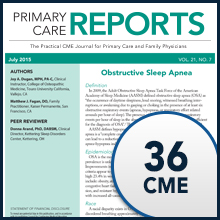High-risk Malpractice Laws Don’t Appear to Improve State Healthcare
March 20th, 2017
CHICAGO – Physicians get the response all the time when they lobby against overly punitive malpractice laws: The threat of liability deters negligence and makes medicine safer.
The problem, according to a new study published in the Journal of the American College of Surgeons, is that the supposition doesn’t appear to be true.
Pointing out that the U.S. medical malpractice system assumes the threat of liability should deter negligence, a study team led by researchers from Feinberg School of Medicine at Northwestern University responds that it remains unclear whether the malpractice environment affects healthcare quality. To remedy that, the researchers sought to explore the association between state malpractice environment and postoperative complication rates.
The researchers conducted an observational study that included Medicare fee-for-service beneficiaries undergoing one of the following types of surgeries in 2010:
- colorectal,
- lung,
- esophageal, or pancreatic resection,
- total knee arthroplasty,
- craniotomy,
- gastric bypass,
- abdominal aortic aneurysm repair,
- coronary artery bypass grafting, or
- cystectomy.
The study team then assessed the state-specific malpractice environment using 2010 medical malpractice insurance premiums, state average award sizes, paid malpractice claims per 100 physicians, and a composite malpractice measure. The primary outcomes were set as 30-day readmission, mortality, and postoperative complications such as sepsis, myocardial infarction [MI], and pneumonia.
Results indicate that measures of malpractice environment did not have significant, consistent associations with postoperative outcomes. “No individual tort reform law was consistently associated with improved postoperative outcomes,” study authors wrote.
In fact, a higher-risk state malpractice environment, based on the composite measure, was associated with higher likelihood of sepsis, (odds ratio [OR] 1.22), MI (OR 1.14), pneumonia (OR 1.09), acute renal failure (OR 1.15), deep vein thrombosis/pulmonary embolism (OR 1.22) and gastrointestinal bleed (OR 1.18).
“Higher-risk malpractice environments were not consistently associated with a lower likelihood of surgical postoperative complications, bringing into question the ability of malpractice lawsuits to promote healthcare quality,” the researchers concluded.

FEATURED RESOURCE




